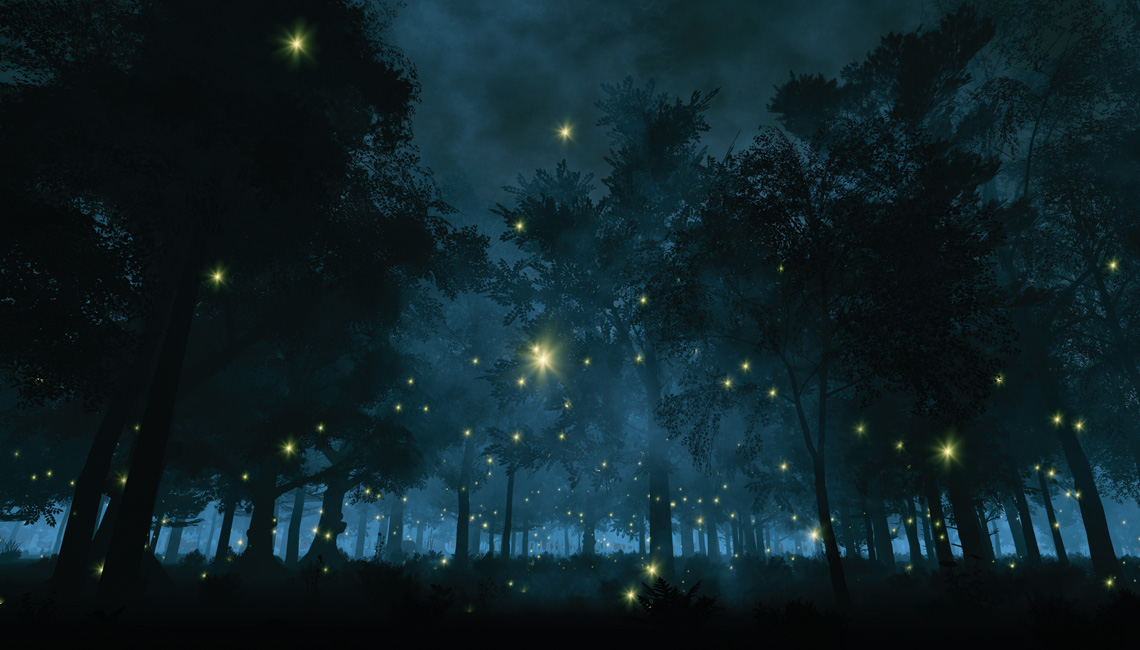It’s the dog days of summer, when the air is close and sultry and the heat oppressive. The nasally drone of insects that go sight unseen comes at you, swarming, rising and falling, lapping like waves that come and go off a lake shore.
If summer sound had colors, they’d be matte — flat, like the noir filter on a smartphone camera, near featureless.
But that belies what nightfall brings. Sirius, the dog star, rises into view near the sun this time of year — a harbinger of the sweltering warmth sure to follow for several weeks. This also marks another illuminating event: the rise of fireflies.
More than 2,400 species of fireflies exist around the globe, including about two dozen that make a home in Ohio. Fireflies, or lightning bugs as some people call them, are not flies at all, but beetles characterized by heavily armored shells over wings.
When they take to the wing, they move about as though they carry a heavy load; speed through the air is not a defense mechanism. Heck, they advertise their whereabouts, from just above the grass to chest-high to weaving through the treetops, for any would-be predator to swoop in and make them a snack.
The height where they fly may very well distinguish one species from another to the discerning eye. No matter the species’ name, they all have similar missions when their hindmost is lit: to find a mate and thereby create more fireflies. (The exception is the femme fatale in the Photuris genus of fireflies, among which the females use light for another purpose: to attract males of another genus and make a meal of the amorous suitors. Nature is fascinating — and brutal.)
Typically, it’s the male firefly that blinks to females that rest on the ground or among the boles of trees or in shrubbery. Some populations of fireflies turn the affair into a disco — synchronously flashing en masse, followed by a pause, then a random and chaotic display, a pregnant pause, then they start it all over again. How they communicate the timing is a curious matter, and it is a wondrous event to witness.
Fireflies are ordered by entomologists into the family Lampyridae, which makes sense if you think about it. The bioluminescent blinking bottom — the lamp — is the most distinguishing characteristic among a litany of beetles. The blink is made up entirely of chemical reactions wired in the nervous systems, and it gives off no heat. You might say it is energy efficient, yet it is a primitive technology eons old.
All of the fireflies around the world live in warm, humid climates. So while the sweltering heat of a Buckeye July may cause you to retreat to the AC, it’s what fireflies live for — literally — during the critical reproduction arc of their life cycle.
Fireflies spend most of their two-year life span on or in the ground as a grub, a wormlike creature living in the forest leaf litter or in the fields plowing soil just below the surface. That’s where they turn soil or move through decaying leaves in search of food. These larval lamps eat worms, other grubs, snails, and bugs. Farmers appreciate firefly larvae because they keep down slugs and snails that otherwise sup on soybean seedlings fresh out of the ground.
With the coming rise of Sirius and the heat of summer’s swelter, they undergo one of the most remarkable wonders of nature: the metamorphosis that turns them into winged beetles. Adult fireflies live only about two months after they have reproduced.
The lumbering flight of fireflies makes them easy to catch — and to marvel over as they blink in your cupped hands. Their transformation from grub to blinking beetle evokes a sense of wonder in children from age 8 to 80 as the beetles put on their fireworks display, which will continue during evenings well past Independence Day.









